The ASRock Rack ALTRAD8UD-1L2T is a motherboard we have seen a number of times on STH. From the moment we laid eyes on it in Taipei last year, this is the motherboard we have been most excited about. For good reason. This is finally a mATX motherboard that uses a low-cost CPU, RAM, and yet is an entire Arm server platform. What is more, given the mATX form factor, it can be used in a variety of bespoke systems including desktops. At STH, this is what we have wanted since we started working with the original Cavium ThunderX in 2016. Around four years, and one global pandemic later, you can now build a somewhat reasonably priced Arm server platform.
ASRock Rack ALTRAD8UD-1L2T Overview
The motherboard itself may look like a mATX 9.6″ x 9.6″ size board, but it is slightly larger. ASRock Rack calls this a deep mATX at 9.6″ x 10.5″. That extra 0.9″ will fit in many chassis, but if a chassis strictly adheres to that 9.6″ depth, it might be a challenge. The reason for the larger size is simple, there is a lot going on here.
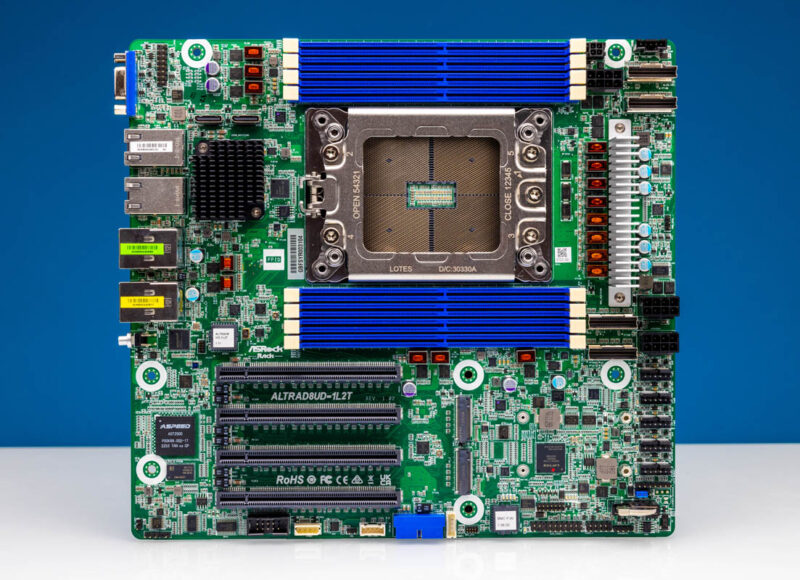
The big feature is the socket for the Ampere Altra (up to 80 cores) and Altra Max (up to 128 cores) processors. Next to the socket are eight DDR4 RDIMM slots. The Arm Neoverse N1 cores are not necessarily the fastest, but this is the platform if you want to make a local development platform. One benefit of the Altra/ Altra Max platform is that it uses DDR4. At this point, DDR4 is still less expensive than DDR5. For those who are looking to build a low-cost development platform, there are great second-hand DDR4 options as well at this point in the cycle. The big tip here is to get DDR4 RDIMMs, not UDIMMs.
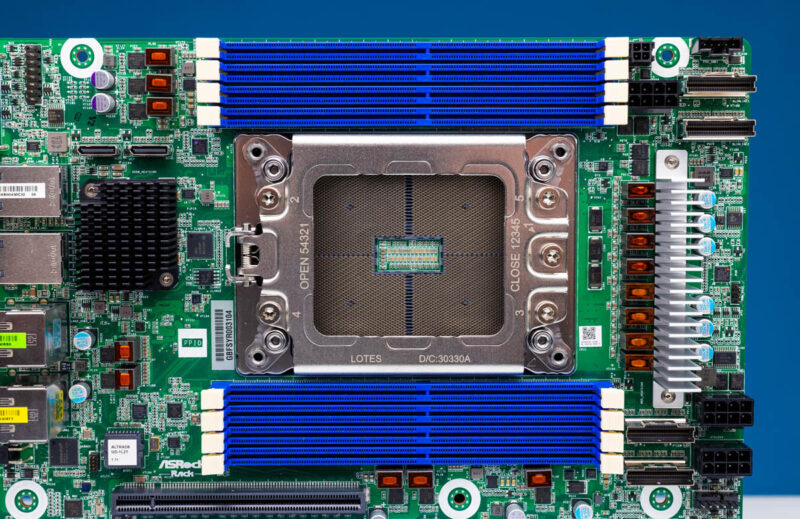
From an airflow perspective, the system is designed for front-to-back airflow. All of the connectors are even designed to follow this airflow direction.
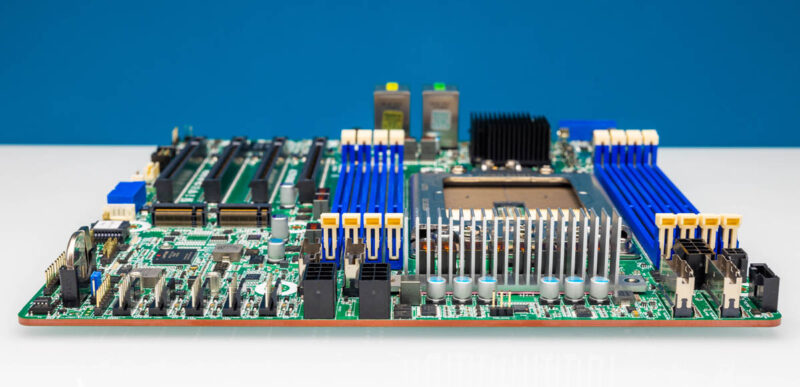
One of the big features that folks will notice are the four PCIe slots. While all are PCIe Gen4 x16 slots, Slots 7 (top) and 6 (second from top) are only x8 when one uses Ampere Altra processors.
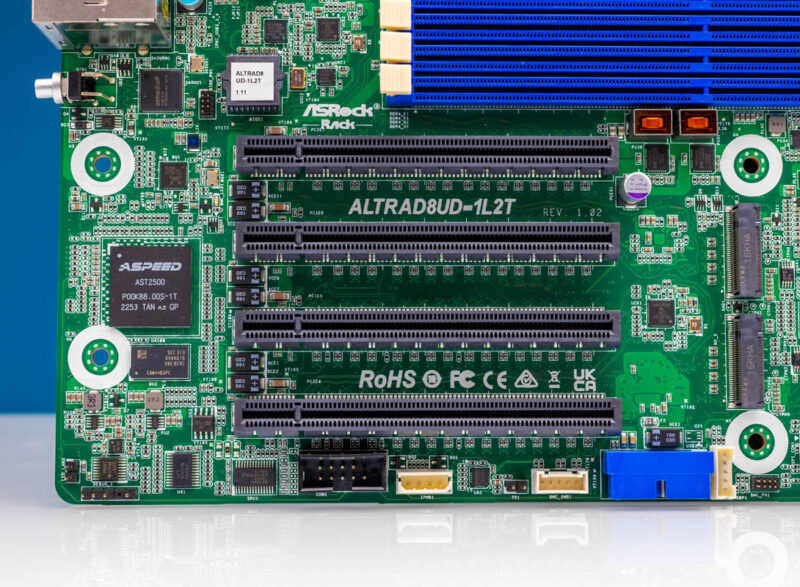
We do not get PCIe Gen5, but for this part of the CPU cycle, most are going to be perfectly fine with PCIe Gen4. The other major constraint is that Slot 4 does not support full-length PCIe slots because of some of the components on the board behind the slot.
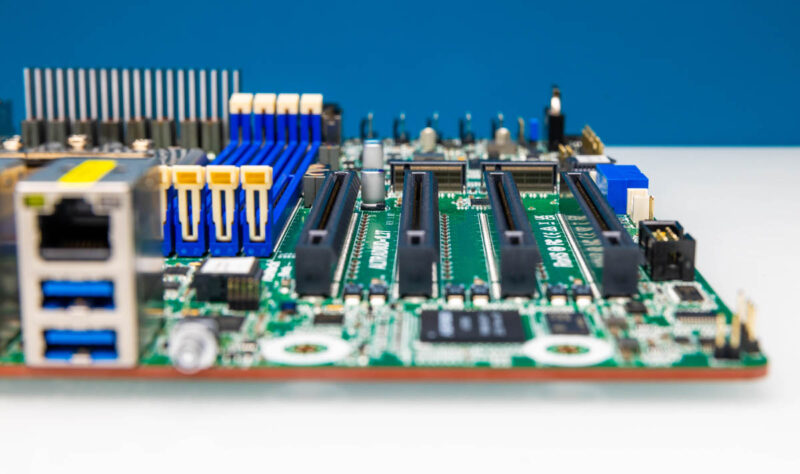
Management is provided by a ASPEED AST2500 BMC.
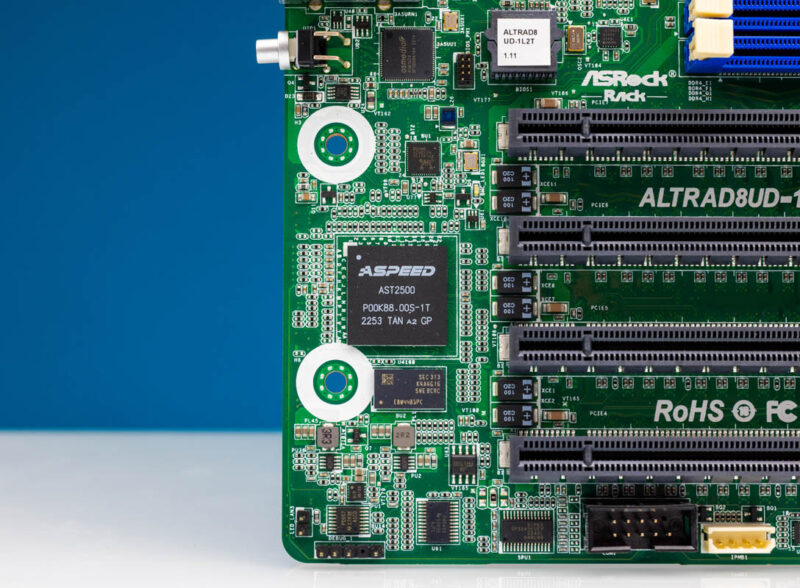
ASRock Rack uses OpenBMC as its base IPMI/ Redfish management solution.
Next to the PCIe slots, there are two M.2 slots. Thank goodness M.2 SSDs are reliable as the two slots are under where many PCIe cards would extend over.
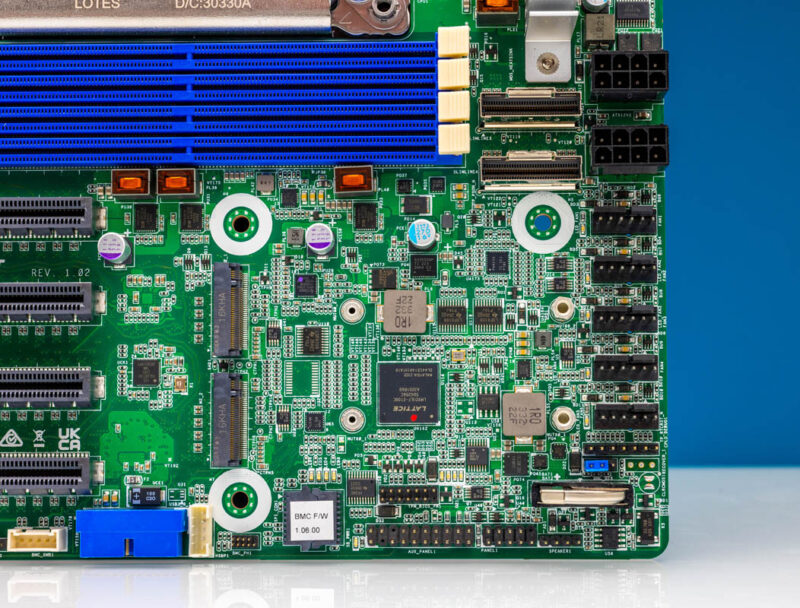
The five 6-pin fan headers are on the leading edge of the motherboard which is great.
Above those, we have two 12V power inputs and then two SlimSAS x8 connectors. Each of these two connectors carries eight lanes of PCIe Gen4. Those lanes can be used for things like front-panel NVMe SSDs.
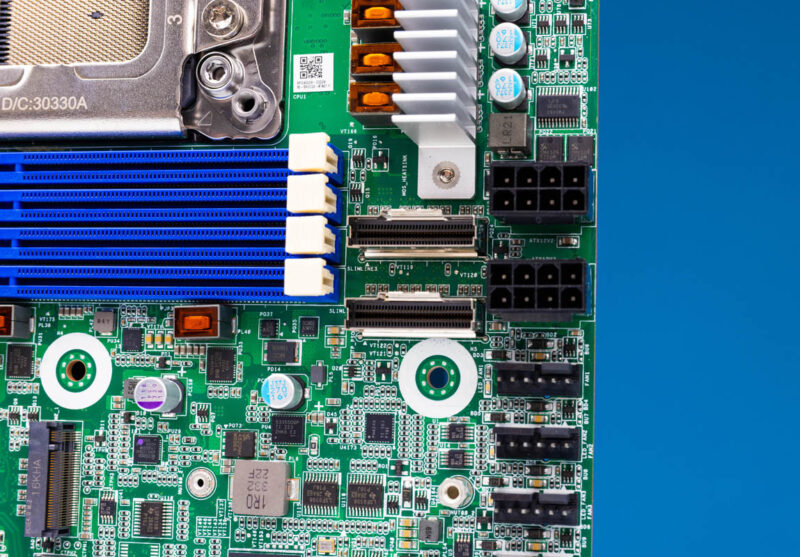
There are two more SlimSAS x8 connectors in the top corner and one more power connector. Even with the deep mATX size motherboard, there is not enough room for a 24-pin ATX power connector.
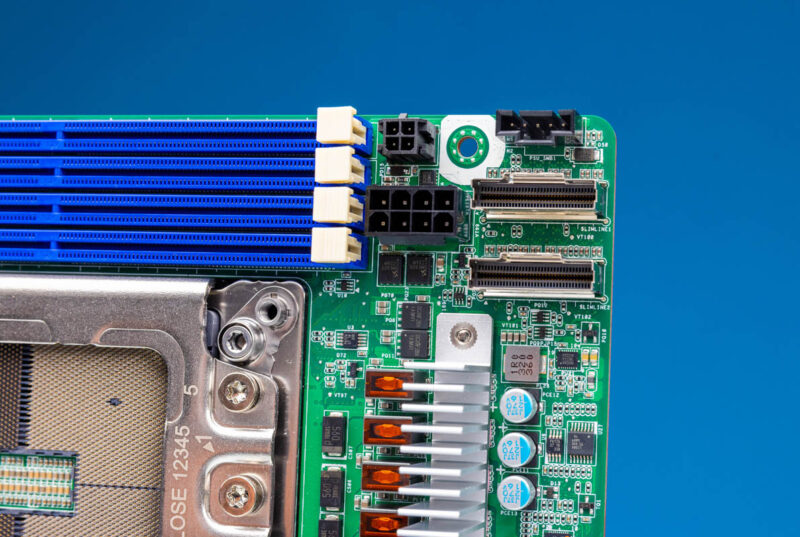
On the other side, there are two Oculink connectors. Each is PCIe Gen4 x4.
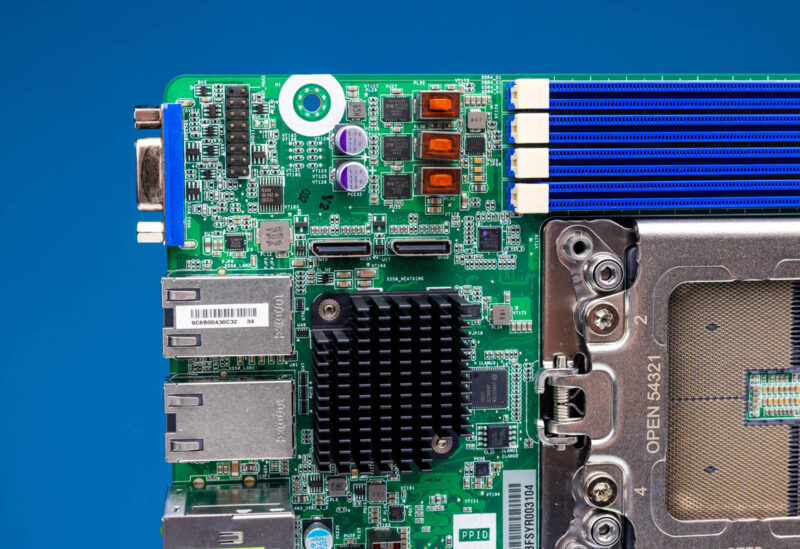
The big heatsink is an Intel X550 10Gbase-T NIC. Aside from the onboard 10GbE, there are two Intel i210-at NICs for 1GbE above the USB 3 ports.
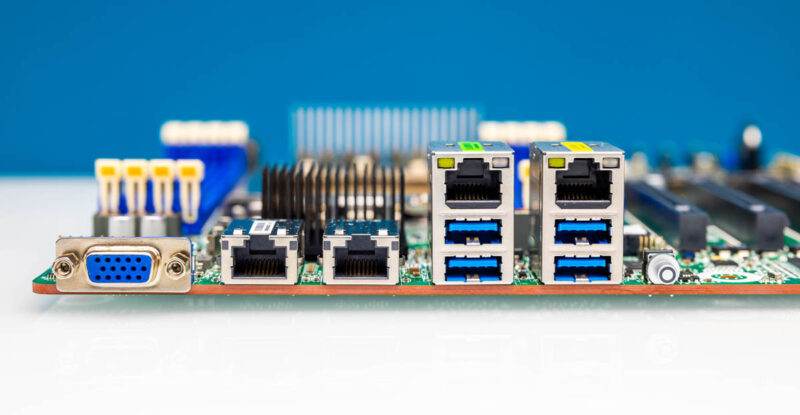
Rounding out the hardware, there is a VGA connector since this is a server motherboard.
Next, let us get to the block diagram.

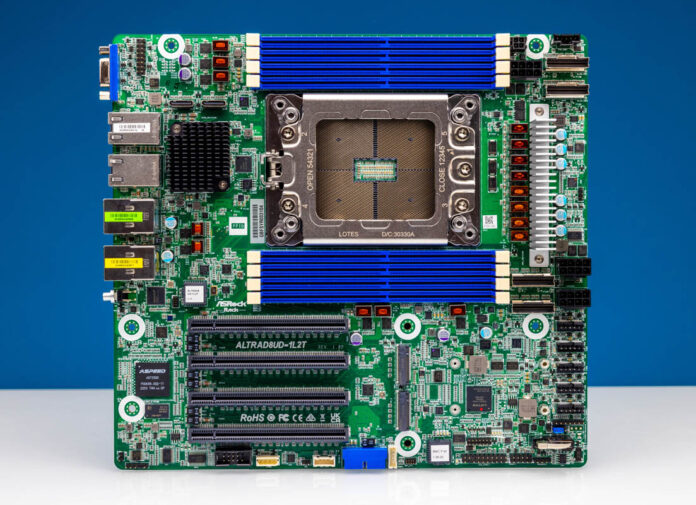

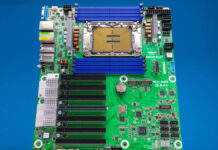
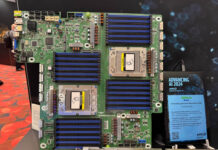
Newegg offers a 64 core CPU combo deal with this board (the rest is barebones) for $1500. Listed as sold out and on backorder. 30 day return policy. The board alone is currently $848 and sold out.
I checked and ASRock released the production UEFI on January 30th! Yesterday! So clearly this is still yet to fill the channel.
to me, kind a outdated components. whats the deal with this board?
why its better than , lets say , x13sem-tf + EMR cpu. power consumption…
Ampere Altra and Altra Max sold in the market because they’re low power and cheap. A 64 core Altra is like a 16 core Ryzen performance, but if you need cores for VMs then it’s 64 not 16.
AmpereOne failed in the market which is why they’re still selling Altra. I haven’t seen an AmpereOne STH review, no Phoronix review. There’s only 2 sites that matter for servers, and neither have reviewed AmpereOne, so it must be a trashcan.
BUT THERE’S the importance of this mobo. It’s the first one that’s like a real DIY board. So you don’t have to use a SBC that isn’t standards compliant. You don’t have to buy a prebuilt server with a large premium. This article did a good job hitting that point and mentioning second hand DDR4 and that.
It’s a big time board but it’s really for Arm developers. We need it because there’s still OSes like Proxmox VE that don’t support Arm.
Where is AmpereOne?
Supermicro says “coming soon”.
But I think its due to the constraint in fab capacity right now. AmpereOne uses a chiplet design from TSMC. And Apple has really screwed the pooch by ordering up so much contractual capacity at the same node, it caused AMD to un-announce the Epyc “Dense”. So I am guessing that Ampere is standing in line waiting for TSMC just like AMD is.
Very nice.
I wonder what it’s like trying to get proprietary Drivers for PCIe cards, compiled for ARM.
Probably non-existent.
@Rob – Since Ampere’s fairly established in datacenter applications now (not to mention a number of other Arm64 systems that have PCIe connectivity), a ton of modern cards are supported now (GPUs, storage controllers, WiFi, 5G, etc.).
There’s still a lot of work to go of course, and a lot of legacy cards (5+ years old) won’t work, but a lot of the cards are supported in the Linux kernel, and many manufacturers are targeting arm64 and amd64 (and sometimes even riscv) with their drivers now.